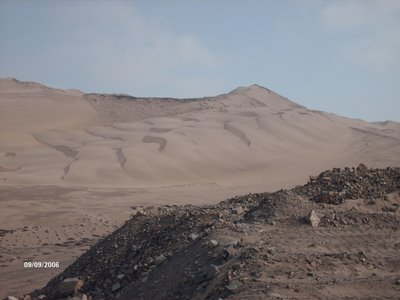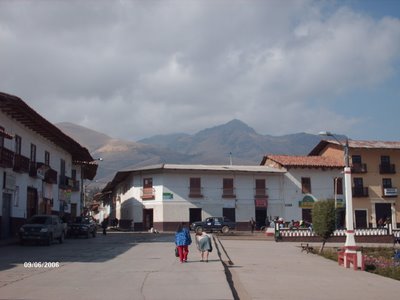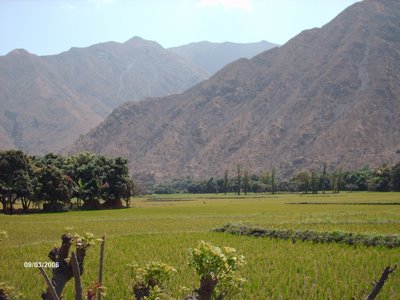
miner with golden nuggets
FRIDAY, SEPTEMBER 15
Nasca has lines. Before the town had lines, it had sand, dust and rocks. The lines attract tourists. Tourists tramp over the pampas. Their footprints wreck the lines. Now the lines are forbidden territory. Fly over them in a small bumpy plane or watch them on video. Walking is out.
Tour companies are in despair. What else can they show their prey? They search desperately for new lines, unforbidden lines.
The manageress of the Hostal Via Morburg is invited by a tour agency to sample their new tour. She invites me to join the freebee. First we visit a gold mine. The actual mine is three-quarters of the way up a shale precipice and inaccessible. The tour company has blasted a tunnel at the bottom of the precipice. This fake mine is our target. The tunnel is man-height and ten feet deep. The manageress is more practised at pretending interest. I prefer talking to one of the miners. The miner earns $580 a month. He lives in a shack on site and works a five and half day week. He climbs the cliff to the mine. A tunnel 350 metres long leads to the workforce. The miner has golden socks. The socks are the closest he’ll get to personal wealth. The mine owner is North American. I am not being snide at the expense of the US. I am reporting fact.
Our guide stops on the return from the mine to show us his latest discovery. We are in a valley of boulders, shale and bare rock. “Look,” he says, pointing at a chunk of mountainside. “You can see the sun and its rays.”
Our guide’s partner in the tour agency points in a different direction, though with equal enthusiasm. “There, look, a cuy. See? That’s the tail.”
I am polite. I look. I see rock. The rock has the commonplace marks any rock face has.
The hotel manageress attempts loyalty to Nasca. Unfortunately she catches my eye.











